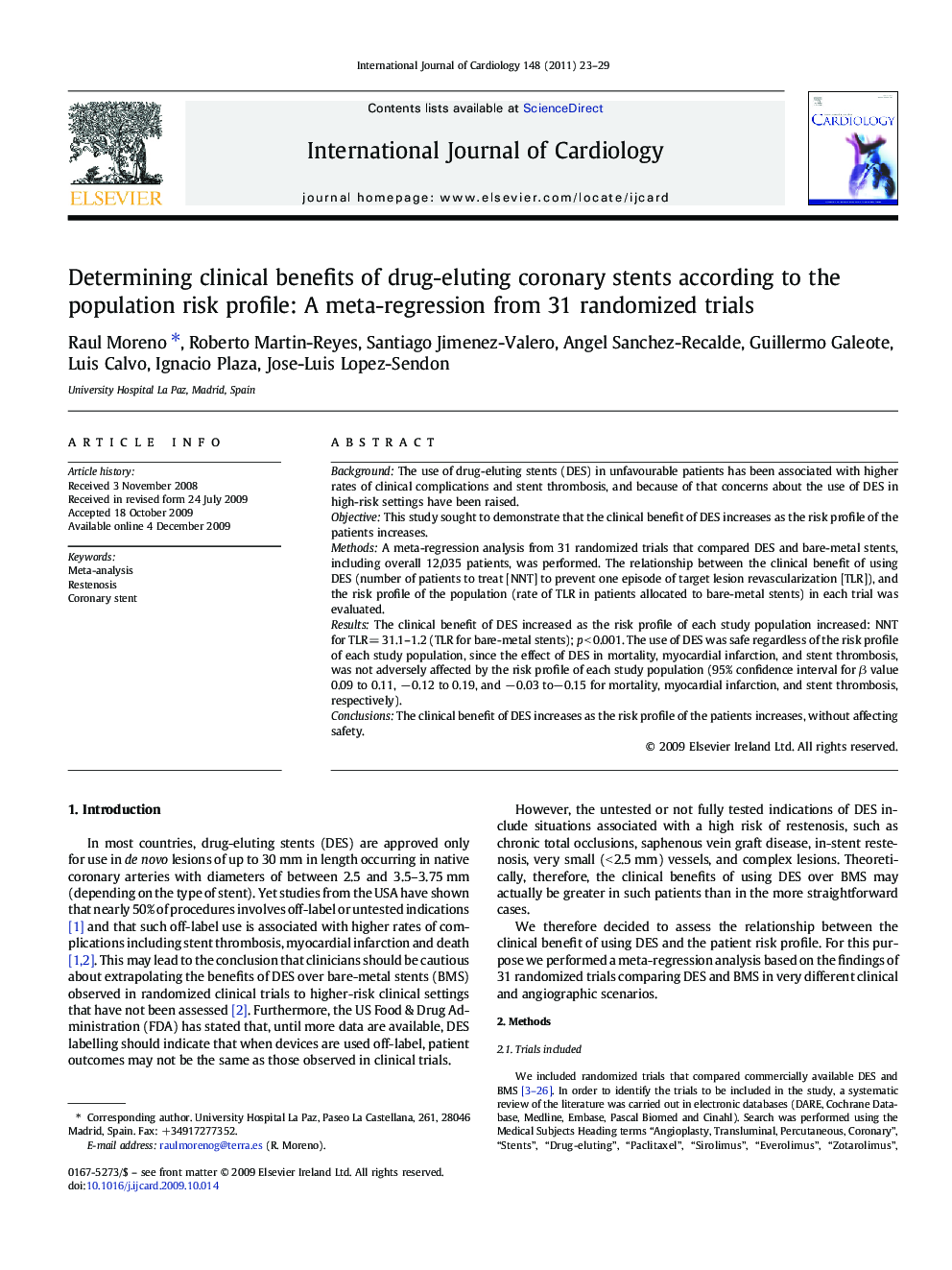| Article ID | Journal | Published Year | Pages | File Type |
|---|---|---|---|---|
| 2930498 | International Journal of Cardiology | 2011 | 7 Pages |
BackgroundThe use of drug-eluting stents (DES) in unfavourable patients has been associated with higher rates of clinical complications and stent thrombosis, and because of that concerns about the use of DES in high-risk settings have been raised.ObjectiveThis study sought to demonstrate that the clinical benefit of DES increases as the risk profile of the patients increases.MethodsA meta-regression analysis from 31 randomized trials that compared DES and bare-metal stents, including overall 12,035 patients, was performed. The relationship between the clinical benefit of using DES (number of patients to treat [NNT] to prevent one episode of target lesion revascularization [TLR]), and the risk profile of the population (rate of TLR in patients allocated to bare-metal stents) in each trial was evaluated.ResultsThe clinical benefit of DES increased as the risk profile of each study population increased: NNT for TLR = 31.1–1.2 (TLR for bare-metal stents); p < 0.001. The use of DES was safe regardless of the risk profile of each study population, since the effect of DES in mortality, myocardial infarction, and stent thrombosis, was not adversely affected by the risk profile of each study population (95% confidence interval for β value 0.09 to 0.11, − 0.12 to 0.19, and − 0.03 to−0.15 for mortality, myocardial infarction, and stent thrombosis, respectively).ConclusionsThe clinical benefit of DES increases as the risk profile of the patients increases, without affecting safety.
